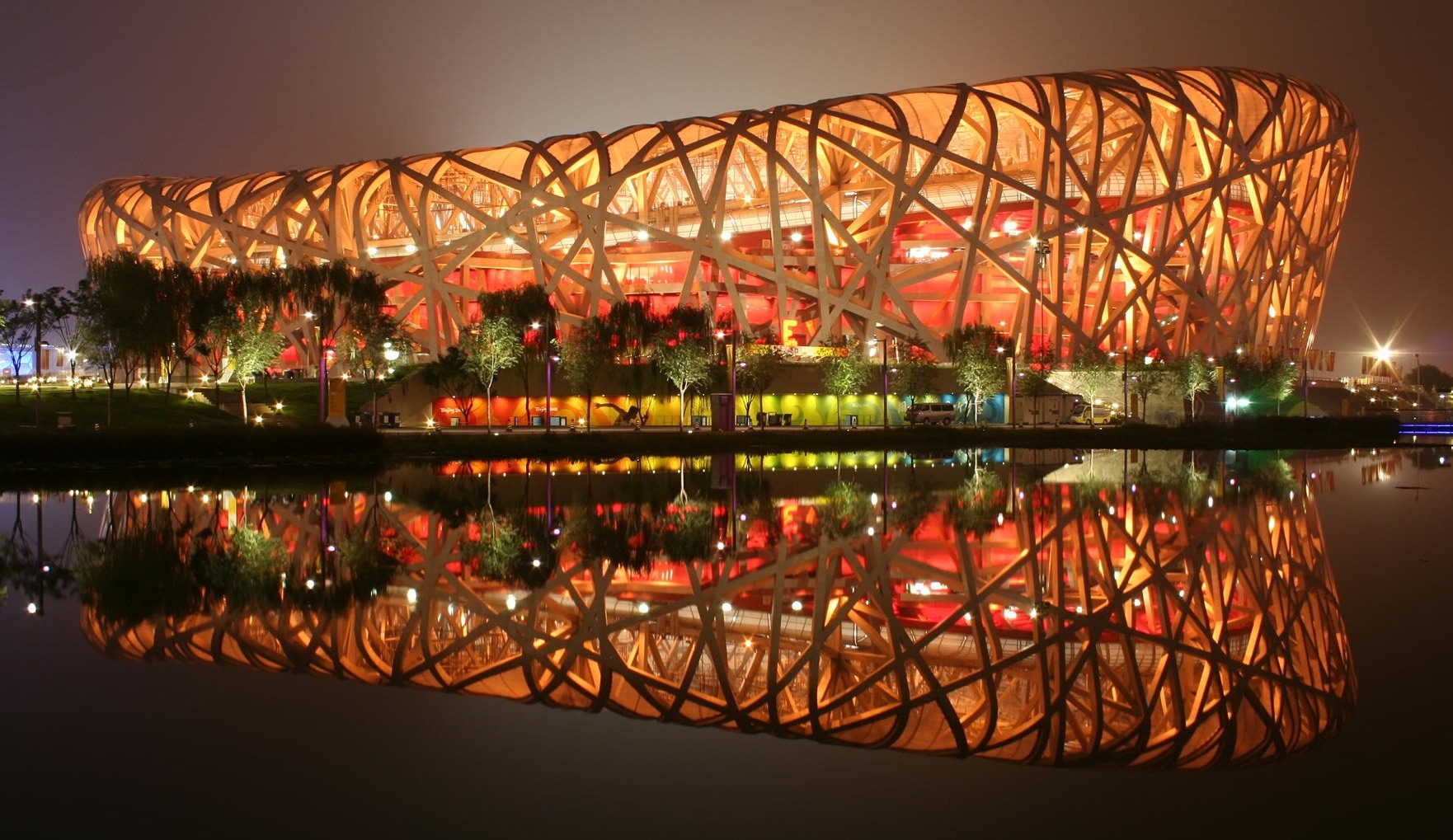
Peter23, CC BY-SA 3.0 <https://upload.wikimedia.org/wikipedia/commons/1/1e/Beijing_national_stadium.jpg>, via Wikimedia Commons
I first saw the work of the Chinese artist Ai Weiwei years ago at New York’s Museum of Modern Art (MoMA) when I saw parts of his Study of Perspective series. A few black-and-white photographs of different world landmarks hung on the wall, all with a middle finger emerging behind the camera. The Eiffel Tower, Tiananmen Square, and the Mona Lisa were all being flipped off by whoever was behind the camera. Though Ai stopped contributing to the series in 2003, he couldn’t help but revive the motif in 2017 to give the finger to New York’s Trump Tower. Giving the middle finger has been so associated with Ai Weiwei that a few years ago he created one thousand small sculptures of the gesture, with several of them selling at auction in recent years for as high as $7,000 (or $8,750 w/p).
Since seeing the Study of Perspective, I’ve followed Ai’s work, from his sculpture Forever Bicycles made from bike frames, to installing cages around New York to bring attention to the plight of refugees worldwide. Ai Weiwei, whose own father was sent to a prison farm in 1957 after defending persecuted artists, has nearly always been ahead of the curb when it comes to calling attention to humanity’s shortcomings, especially those which go on in his home country. After being arrested and detained for 81 days without charge in 2011, he began his process of self-imposed exile. He now lives in Portugal after being allowed to leave China in 2015.
But Ai has come up again in the news recently because of his commentary on Beijing’s Olympic stadium originally built for the 2008 summer games but is now being used for the current winter games. The stadium, known popularly as the Bird’s Nest because of the design, was built by the Swiss architecture firm Herzog & de Meuron, while Ai was brought on as the principal artistic consultant. Even during the 2008 Olympics, Ai Weiwei denounced his creation as “a big disappointment” being used as propaganda by the central government in Beijing. In his book 1000 Years of Joys and Sorrows, Ai writes that the stadium’s design was directly inspired by traditional Chinese ceramic art, and was meant to symbolize freedom and transparency. While Ai seemed hopeful for a better future for his country, fourteen years later, as Beijing hosts another set of Olympic games, he seems more doubtful than ever. He’s been more critical of Beijing than ever, calling attention to the plight of the Uyghur people in western China, as well as the whereabouts of Chinese Olympian Peng Shuai, who has not been seen since accusing a senior party official of sexual assault. He accused the International Olympic Committee of “standing next to the authoritarians” in failing to comment on China’s human rights record.
No one can know if Ai Weiwei’s pessimism about China’s future is wholly warranted. But no one can deny that this artist will always make sure we all pay attention to what’s actually going on in the world.
